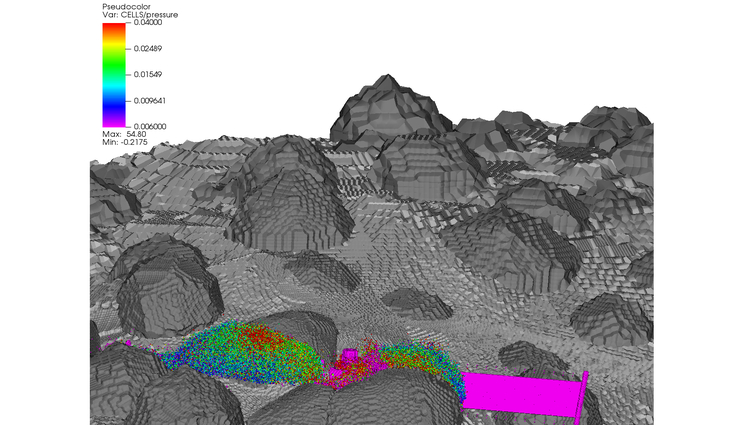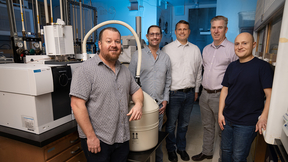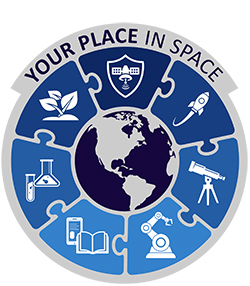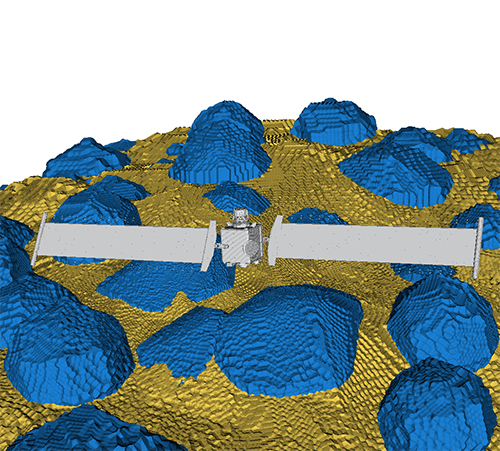#YourPlaceInSpace: LLNL planetary defender promotes career opportunities in the federal space workforce
 (Download Image)
(Download Image)
High-resolution 3-D simulation of NASA’s DART spacecraft impacting asteroid Dimorphos, using LLNL’s Spheral code. Different material properties are assigned to boulders (blue) and matrix (yellow) material. Image courtesy of Kathryn Kumamoto.
Planetary defense physicist Megan Bruck Syal on Wednesday represented Lawrence Livermore National Laboratory (LLNL) at “Space STEM Task Force Pathways to the Federal Space Workforce,” an outreach event hosted by the National Science Foundation. Multiple federal government agencies came together in a virtual interactive session to provide information for students, early-career professionals, and job seekers on the exciting programs and career opportunities in the federal government.
The forum was part of the “Your Place in Space” initiative, which showcases the range of space careers beyond being an astronaut or rocket scientist — from aerospace engineers to space weather scientists.
“Space inspires curiosity, imagination, and aspiration,” Syal said. “Whether we are sparking students’ or graduates’ interest in space or broadening their concept of a space career, we hope to engage the next generation in taking advantage of the unique career opportunities that our federal space agencies have to offer.”
Syal joined a panel of space professionals — including experts in volcano monitoring, geostationary operational environmental satellites, space nuclear power and isotope technologies and quantum electronics and cryogenic sensors — in presenting a session on “Cool Space Jobs.” She spoke of her work leading LLNL’s planetary defense research and of her team’s recent contributions to simulate the impact of NASA’s DART mission on the asteroid Dimorphos.
NASA’s DART spacecraft approaches the asteroid Dimorphos.
Over the past several years, LLNL has been involved in amazing research to protect the earth from hazardous asteroids or comets, Syal said.
“We are really fortunate at LLNL to have the computing resources to do multi-physics simulations of asteroid and comet deflection, and I’ve mentored a lot of people as they’ve worked on these models,” she said. “As DART was really our first real planetary defense test, there are a lot of opportunities for post-docs and early-career researchers to get involved and to contribute in this work.”
Learn more about Syal and her work as a planetary defense physicist on YouTube.
Contact
 Paul Rhien
Paul Rhien
[email protected]
(925) 422-4206
Related Links
Your Place in SpaceTags
Space Science InstituteDefense
Science
Featured Articles









